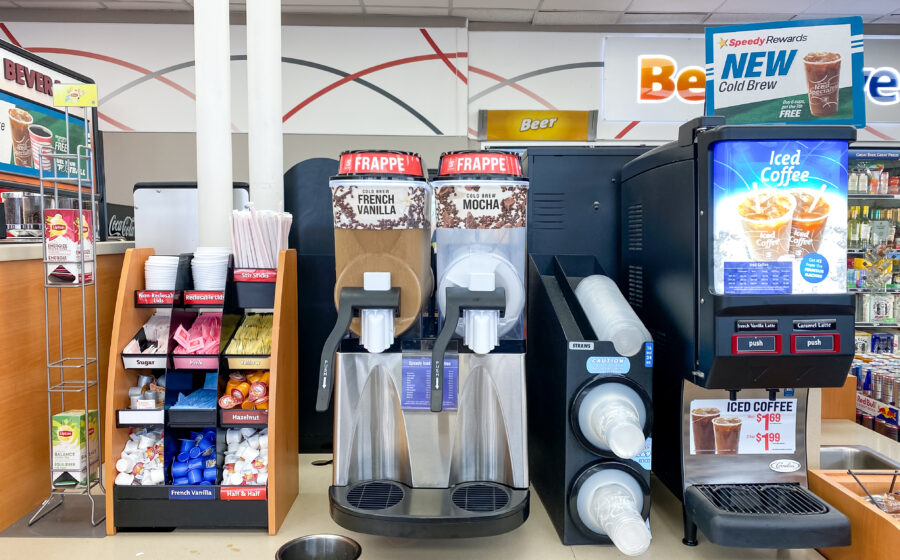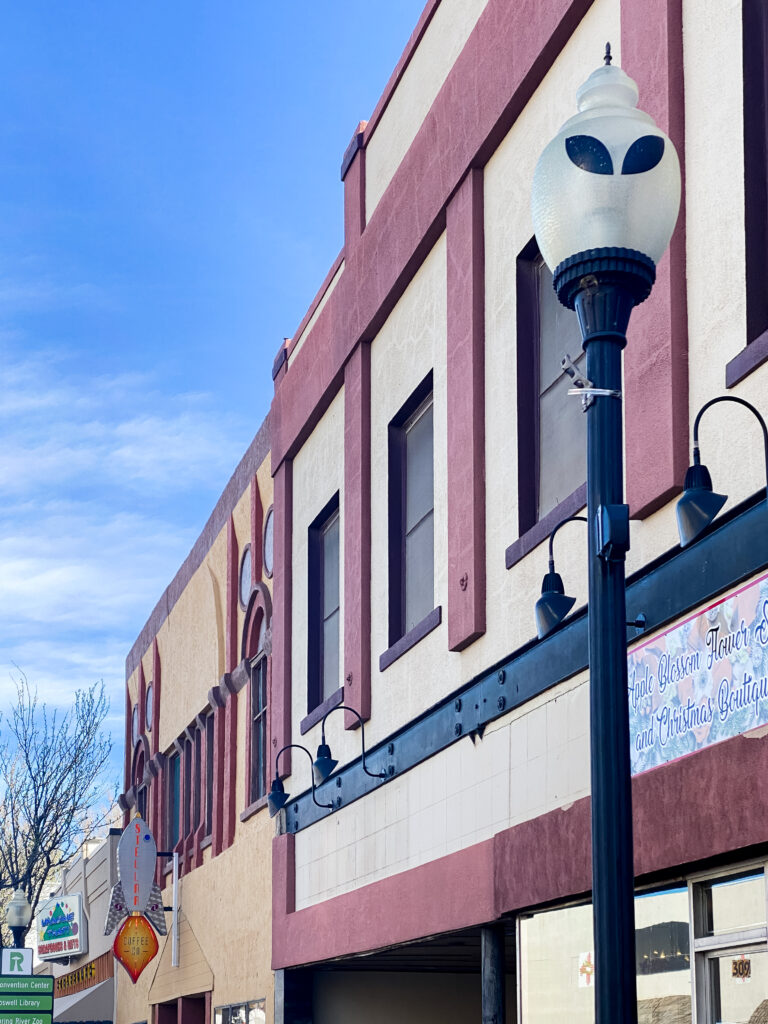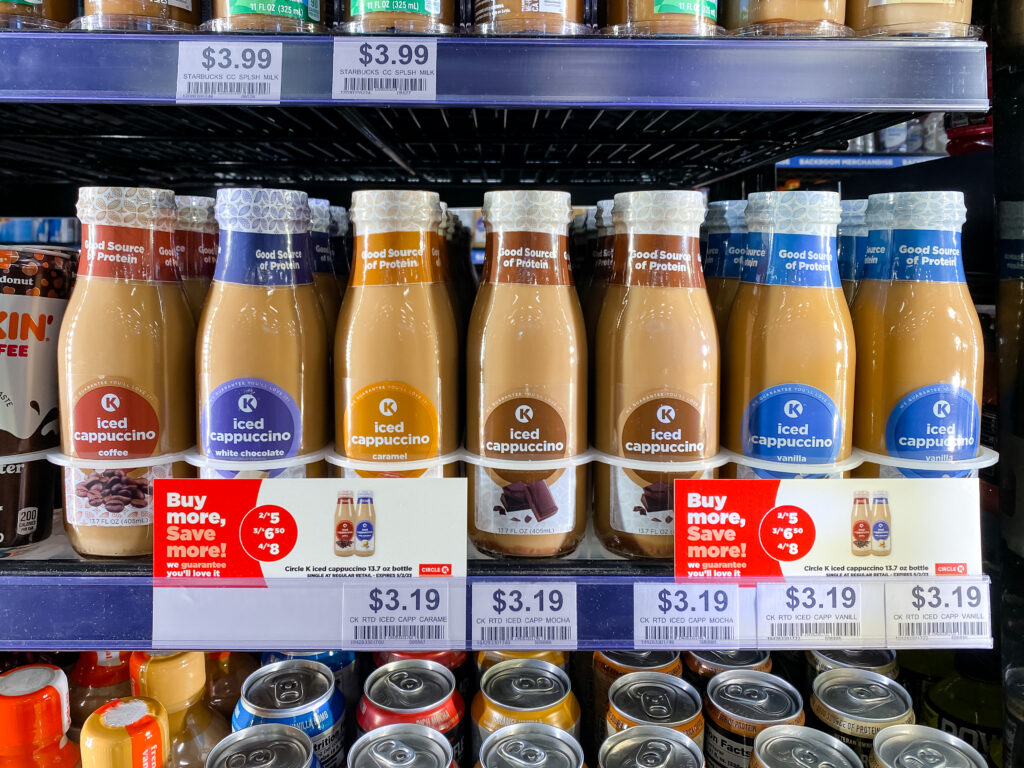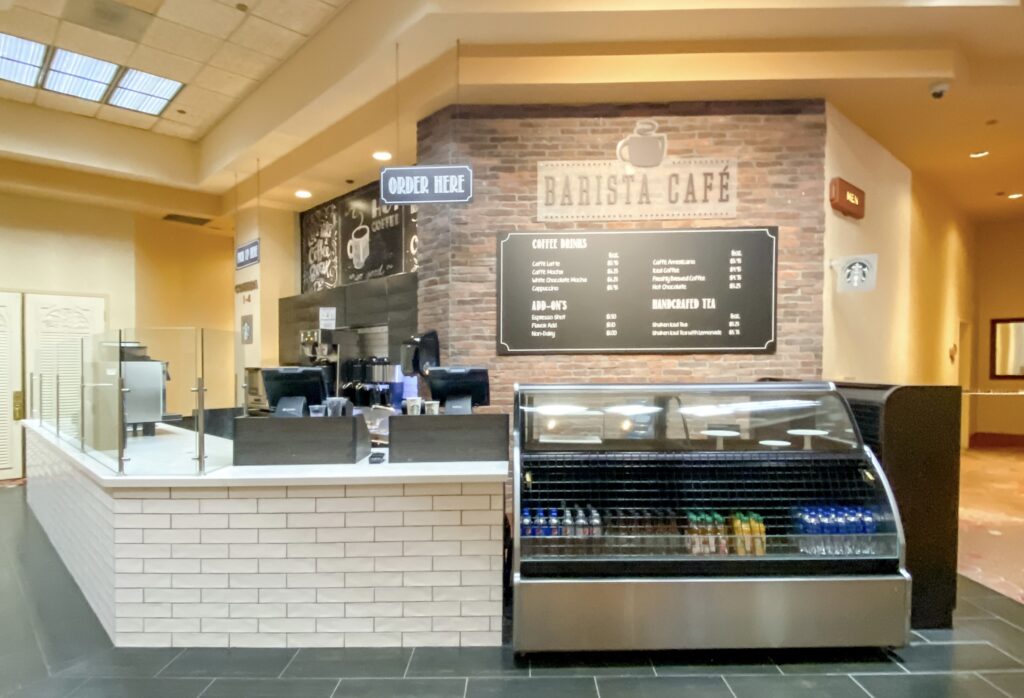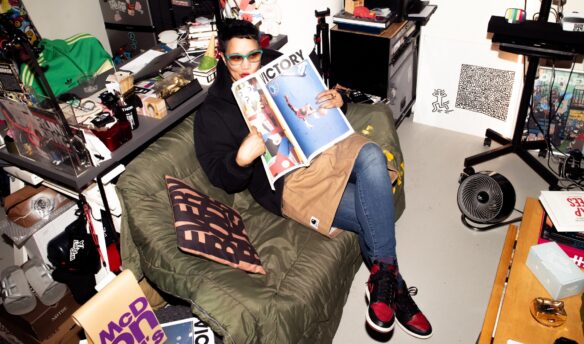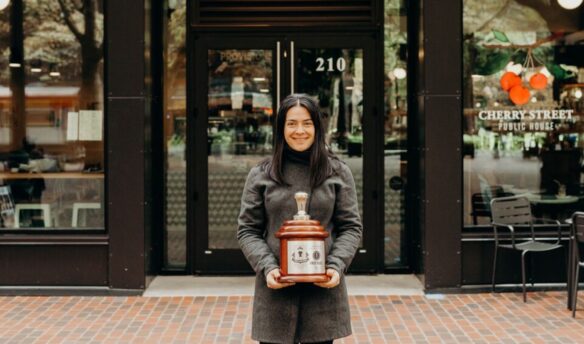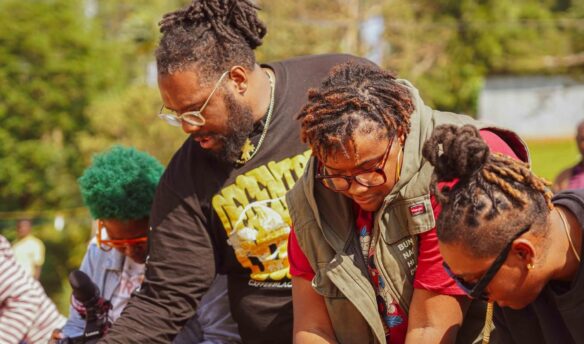My road trip begins on a cold Monday morning. A few weeks before, my mother pulled out all the belongings I put in her attic when I moved away for grad school; my marching orders were to take them or toss them.
I flew into Dallas from Los Angeles to sort it out, wondering what treasures I’d find. Unsurprisingly, it was mostly junk that 26-year-old Valorie thought was Very Cool, like ill-fitting sweatshirts, blank postcards, ticket stubs, and coffee mugs with amusing phrases like “I have the vocabulary of a well-educated sailor.” What I salvaged, including an astonishing amount of coffee brewing vessels, was packed into the backseat of a car, coming with me on a long drive back home.
Dallas to Los Angeles is about a 24-hour drive, one I decided to space out over four days. My last road trip was a meandering move from Washington, D.C., to Dallas when I was 23 years old; I lived out of my car for six weeks, eating fast food and drinking coffee while deciding what to do with my life.
Then, I had just quit a coffee job that I had fallen into when I needed money in DC. I ended up loving it, but I wasn’t sure if I could continue. I wanted to find out if I had a place in the seemingly uncharted and overwhelming coffee industry. “Coffee professional” was a term I’d been explicitly taught was oxymoronic; my family wanted me to get a “real” job, but I just wanted to make coffee and write. I was hungry, eager to learn, and looking for ways to ground my dreams in something resembling a career. I tried every coffee shop I could find during that trip, trying to find myself in them.
Looking at the car now, packed full of tchotchkes from around that time, I realize that this current drive feels like something of a coda to that one, a repeat of a musical movement. Now I’ve been in and around the industry for nearly eleven years, part of me still wonders what comes next.
Suddenly, this utilitarian drive initiated by a desperate plea to my mom not to throw out my stuff feels like a chance to appreciate the myriad ways coffee has changed since 2013—and how I’ve changed along the way. In preparation for the long stretches of highway between shops, I packed some instant coffee from Verve for the drive. I find myself giddy at the prospect of seeing new-to-me cafés.
MONDAY, AM – DALLAS, TX
My trip gets off to a rocky start. As I drive out of the city, it does not occur to me to get a coffee before I leave town. It’s too bad; besides there being a Starbucks on every corner, there are some great third-wave cafés dotting the Dallas-Fort Worth (DFW) Metroplex. Somewhere in west Texas, I pull onto the shoulder of I-20 to make a Dripkit, a portable pour over setup that aptly uses the slogan “Make Great Coffee, Anywhere.”
As I open the package, I realize my car doesn’t have a mechanism to make water hot (I have no clever in-car coffee maker). Even if the car could miraculously heat water, I don’t have a kettle or mug. I sigh and pull back onto the road.
MONDAY, PM – ABILENE, TEXAS
About three hours into the drive, I stop at a combination grocery store and Starbucks in Abilene, Texas. Usually, I only find myself at a Starbucks when I’m stuck in an airport for too long; DFW airport is lousy with them, and I fly in and out of there to see my family. Even then, I only go if I can make it to their Terminal D location—it’s the only one that doesn’t smell like an airport.
Thanks to that, I have a default order that’s comforting in its familiarity: a tall soy caramel macchiato with an extra shot, warm. Starbucks is also the only place I can get soy milk ever since it fell out of favor during the rise of almond milk. It’s the only plant milk I like the texture of, and I relish these moments.
I arrive in Roswell, New Mexico, a city famous for an alleged extraterrestrial sighting in 1947 (and a late 90s teen soap), too late to do anything. As I flip through the channels on the motel television, I wonder if I’ll be kidnapped by aliens.
TUESDAY, AM – ROSWELL, NEW MEXICO
After surviving the night without being taken aboard a UFO—at least, that I remember—I try to make coffee in the motel room. Before drinking anything made with a motel coffee maker, I run clean water through it at least once to ensure it’s (relatively) clean. The water comes out almost black.
Without a coffee cleaner, I decide the risk of getting some mysterious illness from this never-before-cleaned machine is too great, so I search for the nearest coffee shop. I will not repeat the sins of my past (yesterday) by hitting the road without coffee.
There’s a shop downtown with great reviews. Walking over, I am charmed by the city’s commitment to its extraterrestrial associations. The cover on each street light has a decal that makes the lights look like an alien’s face. The coffee shop itself only loosely adheres to the theme: the logo is a rocket ship, and a single piece of Marvin the Martian artwork hangs by the bathroom. But the pourover I receive—a washed Kenyan coffee made on a V60—is delicious, and I hit the road without complaints.
I drive from Roswell to Page, Arizona, my longest day of driving at nine hours. I stop in Albuquerque to stretch my legs and fill the gas tank. The station is out of coffee—plumb out, not even a Starbucks frappuccino in the fridges—so I pour bottled water into a styrofoam cup and heat the water using a microwave that smells like frozen tacos. I mix in some instant coffee, but I forgot to read the instructions (“Instructions? How hard could instant coffee be?”) and used far too much water. I don’t realize my mistake until I’m back on the road. I’m reluctant to pull over again, so I suffer through coffee-flavored water for the sake of saving two minutes.
TUESDAY, PM – GALLUP, NEW MEXICO
A few hours later, I am confronted by an island counter buckling under an array of coffee options. The gas station I stop at has way more options than my previous pit stop, and I feel spoiled for choice: two cold brew dispensers and two hot brewed coffee dispensers, while a spinning slushie machine makes frappés. I’m drawn to an espresso-beverage machine promising concoctions I’ve never heard of, like a “peanut butter and jams” latte. I am sure this will be vile, but I also must know what it tastes like.
My cup size options are medium, large, extra large, and 24 ounces. I ask the person behind the counter about the bizarre sizes.
“It makes no sense. Why wouldn’t the medium be small, the large be medium….” She trails off. I want to ask her why 24 ounces isn’t called extra-extra Large, but she wanders away before I can. I get a medium and press the button for PB&J.
All that comes out is brownish water. I try again, thinking I pressed the button incorrectly—I had messed up instant coffee only hours before. But the process repeats itself—and continues with other flavors such as Gingerbread Mocha and Diet Latte. The other buttons are covered with sad faces scribbled on Post-it notes, which I assume means “empty,” “broken,” or “don’t bother.” I consider asking what Diet Latte even is, but the woman looked so perturbed by my size question that I leave her in peace and settle for one of the plain iced coffees. I get back on the road, a mediocre iced coffee in the cupholder.
When I stop for the night, there is a pod machine in the hotel room. I immediately wonder why no one has stolen it—it’s not even bolted down! Then I wonder why I wondered that. I go to bed contemplating this thought.
WEDNESDAY, AM – PAGE, ARIZONA
I consider making coffee with the pod machine, but the pods available seem strangely deflated like they’ve been there for years. They’re also not branded—they say ‘COFFEE’ in big Helvetica letters, which makes me feel like they were an unsuccessful invention for the International Space Station (I was clearly abducted by aliens in Roswell). If only they came in a silver toothpaste tube so astronauts could squeeze it out like pureed chocolate. If it’s not good enough for astronauts, it’s not good enough for me.
When I get on the road, I stop at a gas station to fuel myself and the car. Inside are several large coffee brewers, and one touts a freshly-ground seasonal single-origin coffee option. I’m amazed: this is not the gas station coffee I grew up with. I get a coffee—again, the smallest option is a medium—and watch as the machine grinds and brews in under a minute. As I grab the coffee, a thin crema evaporates from the top of the 16-ounce cup. Nevertheless, I’m hopeful it might be good.
It’s not. It tastes ashy. Paradoxically, I find that comforting. Gas station coffee hasn’t changed, but the news about single-origin coffee is getting out there. Maybe this will lead more people to embrace better coffee, removing its ‘frou-frou’ reputation. Perhaps that’s overly hopeful, but I allow this moment of optimism to wash over me.
But quickly, my attention turns to other important matters as I spy several syrups to flavor my coffee. I go with hazelnut: under the notes of ash, I can taste some nuttiness in the coffee, so I’m hopeful the syrup will enhance that flavor—at worst, it’ll cover it up with sugary deliciousness. I load my drink with half-and-half from tiny containers until my coffee is roughly camel-colored. It’s incredible the way only gas station coffee can be.
I browse the gas station for snacks and water but instead find a brand of bottled coffee beverages that gives me pause. The plastic wrapped around the lid boasts a claim that each of its iced cappuccino drinks is a Good Source of Protein! It’s a claim I’ve never heard.
I pull a vanilla-flavored one out of the fridge to examine the label, but it lists coffee, milk, sugar, and artificial vanilla flavoring as the only ingredients. I suppose milk is a decent source of protein, but enough to brag about it? I buy it because, as with the PB&J latte I never acquired, I have to know what this tastes like.
As soon as I’m in the car, I open the protein cappuccino. It smells like a protein shake and has the goopy texture of one, plus a chemical taste. After a few sips, I give up, turn back to my single-origin coffee with milk and cream, and make my way to Las Vegas.
WEDNESDAY, PM – LAS VEGAS, NEVADA
Once I check into my hotel, I first notice that the Las Vegas Strip is dead. It’s the off-season, so many places are closed, and the neon lights are subdued. I know the energy is very different during peak season, but right now, the strip has the haunted vibe of an abandoned mall that nature has yet to reclaim.
The second thing I notice is that my hotel room has no coffee machine. I feel vindicated—my previous concerns about hotel coffee machines and theft were warranted. Initially convinced the previous tenants had stolen my room’s coffee machine, I then remember I’m only paying $45 a night for my room. Perhaps that discount rate explains why there’s no machine. I still feel vindicated regardless.
THURSDAY, AM – LAS VEGAS, NV
When I wake up and wander out of my hotel room, the sleek in-resort coffee bar (ominously named Barista Café) is closed. There’s apple juice in a locked fridge, which makes me think someone must be coming back at some point. But the hoppers are empty at nine AM, so I figure it can’t be today. I consider waiting around or asking a staff member for help, but the hall is empty, which feels suddenly very threatening.
The apocalyptic, abandoned feeling from the night before increases as it occurs to me that it’s been nearly twelve hours since I’ve seen anyone besides the hotel clerk that checked me in. I’ve yet to see another hotel worker or guests outside the casino. Has everyone disappeared? Images of the kids in Jurassic Park trapped in the kitchen by a superior predator fill my head. The city feels like an abandoned amusement park, and here I am in an abandoned kitchen filled with stainless steel—just like they were! My pre-caffeine logic leaves a lot to be desired.
I head to Vesta Coffee, just off the strip. I have a flat white in the café—mostly to shake off irrational fear that a velociraptor is coming to get me—and another one to go. More importantly, I have learned from my mistakes: I resurrect an insulated tumbler from somewhere in the boxes from my mom’s house and ask the barista to fill it with hot water. I will have hot water with me the next time I want to brew on the road.
This café sells ground coffee in tea bags, which I notice as I linger by the register. I marvel at this; why have I never seen these before? I buy a box and dunk two coffee bags into the hot water in my tumbler about an hour later. I’m prepared this time.
THURSDAY, PM – LOS ANGELES, CALIFORNIA
I get back to Los Angeles, mildly surprised that an avalanche of coffee detritus doesn’t spill out of the car when I open the door. I unload the boxes, greet my angry cats, and make coffee myself for the first time in days. It’s late afternoon, and I’ve already had three coffees, but one more can’t hurt.
The drive made me appreciate how coffee shops are expressions of the community they’re in. With nine years of space between my two road trips, the industry no longer feels like an uncharted abyss, my place in coffee no longer a question mark. There’s space for everyone—including those like me who want to brew coffee and write, a career and image I could have never pictured almost a decade ago.
Later that night, I search the internet for a PB&J simple syrup. I’m still curious.

